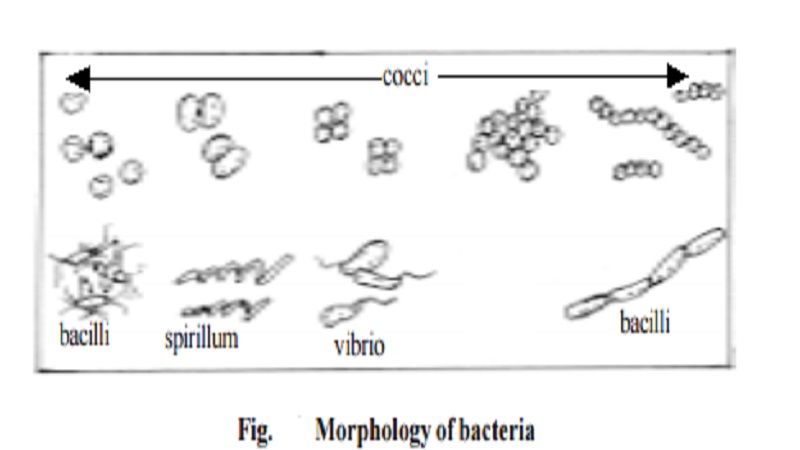Chapter: 11th 12th standard bio zoology Human Body higher secondary school
Bacterial structure And Culture

Bacteria - structure
The structure, size and arrangement of bacterial cells consitute their morphology.
The various morphological features are
1. They are spherical or rod like or spiral shaped.
2. The arrangement of cells in pairs, clusters, chains, trichomes and filaments etc.
3. The appendages are visible by special staining techniques or by electron microscopy.
The above three features represent the gross morphological characteristics, which are of taxonomic importance in bacterial species identification. In addition, the bacterial cells possess elaborate internal structures, which constitute microbial cytology and bacterial anatomy.
Bacterial Culture
All bacteria need nutrients for their growth. They need a nutrient medium for their growth and culture. A bacteriological medium is composed of known chemical compounds. It is called a chemically defined medium or synthetic medium, The compounds are carbohydrates, proteins, nucleic acids, lipids, vitamins and other complex organic substances. Certain complex materials include peptones, meat extract, yeast extract etc. The medium with the above raw materials can support the growth of a wide variety of heterotrophic bacteria. Agar is included as a non-nutritive solidifying agent. Nutrient agar and nutrient broth are the simple solid and liquid media for the growth of heterotrophs respectively.
The preparation of bacteriological media involves the following steps.
1. Each ingredient or the complete dehydrated medium is dissolved in the appropriate volume of distilled water.
2. The pH of medium is determined.
3. Agar is added and the medium (solid medium) is boiled to dissolve agar.
4. The medium is dispersed in flasks or tubes.
5. The medium is sterilized by autoclaving.
The growth of bacteria also require in addition to nutrients, physical conditions such as temperature, gaseous conditions and pH (acidity and alkalinity) and other miscellaneous requirements such as illumination, hydrostatic pressure, etc.
Related Topics